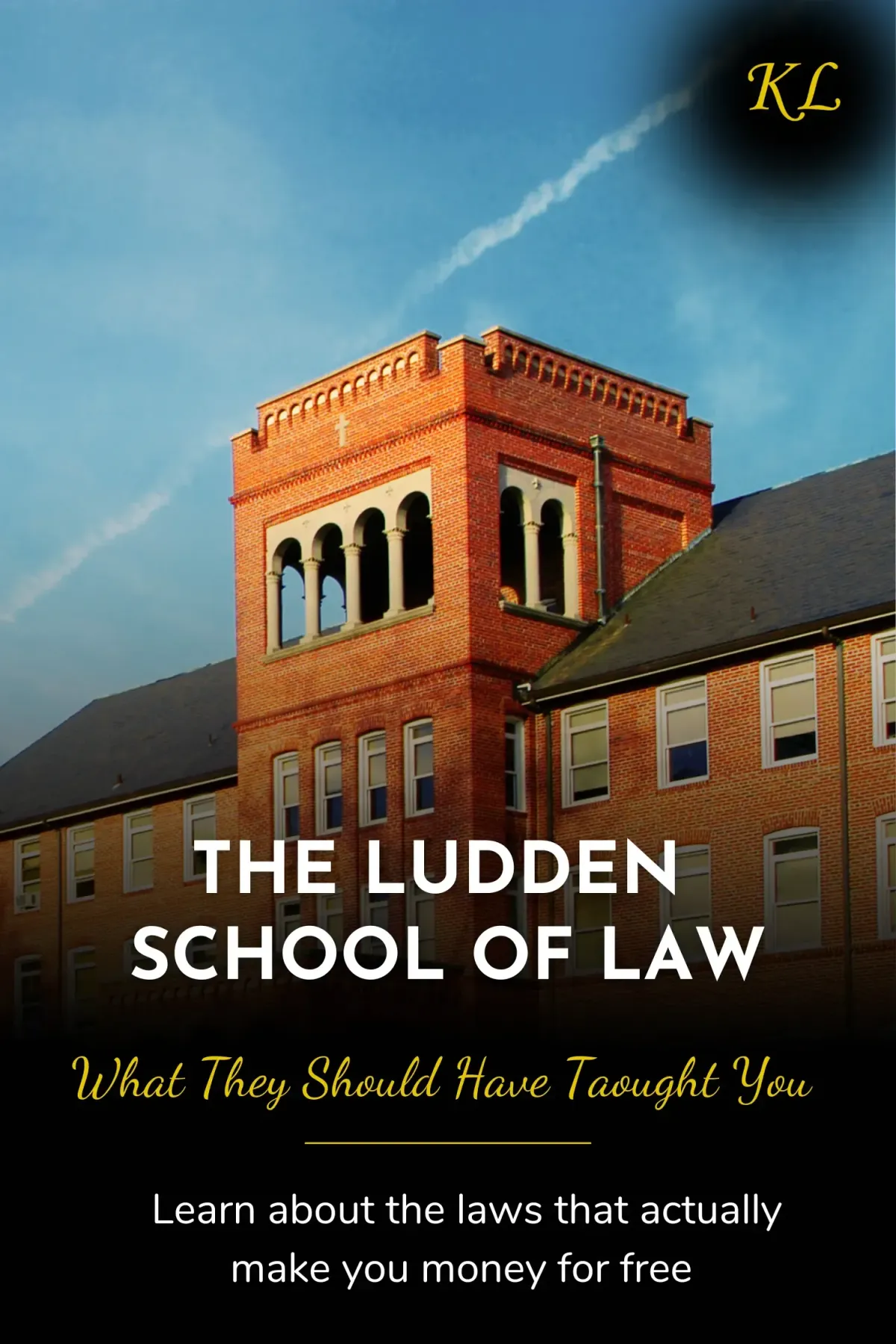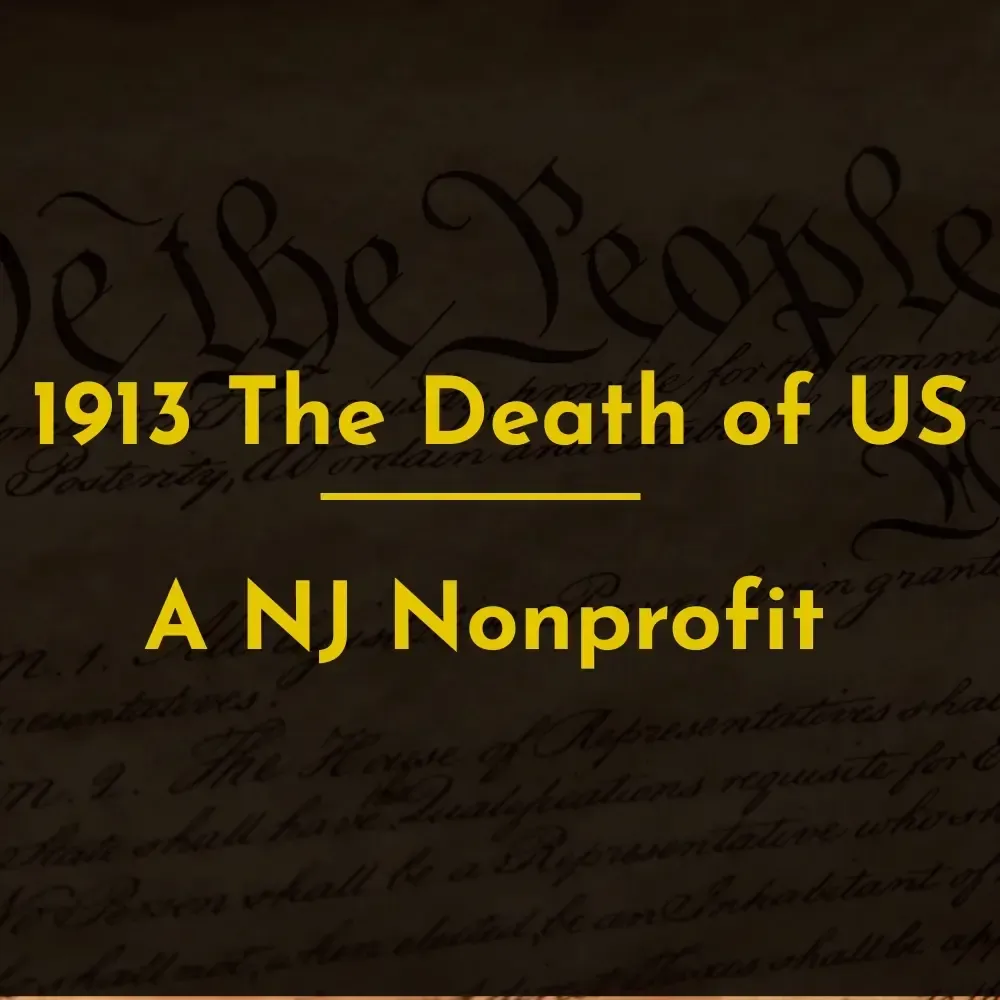THE DEATH OF 1913
Every child is unique therefore every child needs to be uniquely educated. Proper education needs to be created to create a proper change.
1913
THE DEATH OF US
A New Jersey Non-Profit
A non-profit seeking to revitalize and recreate the educational system using new technologies to advance
Our Founding Father's
ideals
1913 The Death of US is an interactive learning experience with 3 primary schools:
16th Amendment:
Sixteenth Amendment
Passed by Congress July 2, 1909. Ratified February 3, 1913.
Note: Article I, Section 9, of the Constitution was modified by the 16th Amendment.
The Congress shall have power to lay and collect taxes on incomes, from whatever source derived, without apportionment among the several States, and without regard to any census or enumerationation.
16th Amendment DECODED
Sixteenth Amendment
Passed by Congress July 2, 1909. Ratified February 3, 1913.
Note: Article I, Section 9, of the Constitution was modified by the 16th Amendment.
The Congress shall have power to lay and collect taxes on incomes, from whatever source derived, without apportionment among the several States, and without regard to any census or enumerationation.
17th Amendment:
Passed by Congress May 13, 1912. Ratified April 8, 1913.
Note: Article I, section 3, of the Constitution was modified by the 17th amendment.
The Senate of the United States shall be composed of two Senators from each State, elected by the people thereof, for six years; and each Senator shall have one vote. The electors in each State shall have the qualifications requisite for electors of the most numerous branch of the State legislatures.
When vacancies happen in the representation of any State in the Senate, the executive authority of such State shall issue writs of election to fill such vacancies: Provided, That the legislature of any State may empower the executive thereof to make temporary appointments until the people fill the vacancies by election as the legislature may direct.
This amendment shall not be so construed as to affect the election or term of any Senator chosen before it becomes valid as part of the Constitution.
17th Amendment DECODED
Passed by Congress May 13, 1912. Ratified April 8, 1913.
Note: Article I, section 3, of the Constitution was modified by the 17th amendment.
The Senate of the United States shall be composed of two Senators from each State, elected by the people thereof, for six years; and each Senator shall have one vote. The electors in each State shall have the qualifications requisite for electors of the most numerous branch of the State legislatures.
When vacancies happen in the representation of any State in the Senate, the executive authority of such State shall issue writs of election to fill such vacancies: Provided, That the legislature of any State may empower the executive thereof to make temporary appointments until the people fill the vacancies by election as the legislature may direct.
This amendment shall not be so construed as to affect the election or term of any Senator chosen before it becomes valid as part of the Constitution.
Federal Reserve Act and the Creature From Jekyll Island BOOK
Every child is unique, therefore every child needs to be uniquely educated. Our current educational systems and teaching methods are rooted in outdated practices from centuries ago. To bring about meaningful change, we must develop a new and effective model for education.
“
"There is no such thing as teaching just learning"
- Porter Stansberry, Founder Stansberry Research & CEO of Marketwise
“
There is no such thing as teaching just learning”
- Poter Stansberry
By The Ludden School of Law
The 16th Amendment

Whats Inside This Lesson?
Understand the limitations of federal taxation before 1913
Discuss the long-term effects of the income tax on federal revenue and government programs.
Recognize how the amendment gave Congress explicit authority to tax individual incomes.
Learn how the amendment removed the requirement for apportioning taxes among states based on population.
By The Ludden School of Law
The 17th Amendment

Whats Inside This Lesson?
Examine the issues with legislative selection: corruption, deadlock, and lack of public input.
Consider how the direct election of senators affects modern elections, campaign finance, and voter engagement.
Understand the legal process by which the amendment addressed issues of legislative corruption, gridlock, and lack of public accountability in the senatorial selection process.
By The Ludden School of Law
The Federal Reserve Act

Whats Inside This Lesson?
Examine the banking panics of the late 19th and early 20th centuries, especially the Panic of 1907, that exposed weaknesses in the U.S. financial system.
Identify key powers granted by the Act:
Examine the Fed's ongoing role in controlling inflation, managing employment levels, and responding to economic crises.
Whats Inside This School?
Why "A tax based on income will be the Death of the middle class"
Thomas Jefferson & Benjamin Franklin
Understand the limitations of Federal taxation before 1913
Discuss the long-term effects of the income tax on federal revenue and government programs
Recognize how the 16th Amendment gave Congress explicit authority to tax individual incomes
Learn how the Amendment removed the requirement for apportioning taxes among states based on population, AKA a POP tax (Pay One Price)
By the Ludden School of Law
The 16th Amendment

Whats Inside This School?
How the 17th Amendment removed the States from the United States of America
Examine the issues with legislative selection: corruption, deadlock, and lack of public input.
Consider how the direct election of Senators by the People affects modern elections, campaign finance, and voter engagement.
Understand the legal process by which the amendment addressed issues of legislative corruption, gridlock, and lack of public accountability in the senatorial selection process.
By the Ludden School of Law
The 17th Amendment

Whats Inside This School?
Examine the Fed's ongoing role in controlling inflation, managing employment levels, and responding to economic crises.
Identify key powers granted by the Act:
Examine the banking panics of the late 19th and early 20th centuries, especially the Panic of 1907, that exposed weaknesses in the US financial system.
By the Ludden School of Law
The Federal Reserve Act

“
The Ludden School of Law introduces a new approach to teaching—not just what the laws are, but what they ought to be



The Gold Standard Was Set By The Bible
The Bible presents gold and silver not just as materials of wealth, but as foundational elements in the development of trade, currency, and value systems. Long before modern monetary standards, Scripture referenced the use of these metals as the basis for commerce and economic exchange.
Currency in the Bible
From the earliest pages of Genesis, we find the roots of trade and the use of precious resources. Gold, silver, and barley served as mediums of exchange, each with unique properties and purposes. Silver, in particular, was ideal for daily transactions—rare enough to hold value, yet more accessible than gold and more durable than barley.
In Leviticus 27:16, we see what some refer to as the “silver standard,” where silver is used to determine the value of land, linking it directly to agricultural produce like barley. This reflects a tangible, grounded approach to economic valuation rooted in resources and productivity.
Money Belonged to the People
In early biblical times, money wasn’t minted coins, but pieces of silver. Transactions involved weighing silver and testing its purity with a touchstone (Jeremiah 32). This decentralized system meant money was closely tied to actual value, and remained in the hands of the people—not yet subject to manipulation by centralized authorities.
Silver was used for everyday commerce, while gold was often reserved for preserving wealth and symbolizing divine value. In Genesis 2:10–12, gold from the land of Havilah is described as “good,” establishing gold as a material of high worth from the very beginning.
The Introduction of Coins and the Rise of Control
Coins were likely not introduced to the Israelites until the 5th or 4th century BC. With them came routine governmental control over currency. The Roman denarius, referenced by Jesus in Matthew 22:19, serves as a striking example. Originally minted in 211 BC with nearly pure silver and weighing around 4.5 grams, its content was gradually debased. By Jesus’ time, it had dropped to 3.9 grams, and under Emperor Nero, it lost even more purity. By the mid-third century AD, it had become mostly copper with only a thin silver coating—evidence of inflation and declining trust in state-controlled currency.
Despite these changes, the denarius remained the daily wage for laborers (Matthew 20:2), illustrating how governments maintained the appearance of value while diminishing real worth.
Silver Vessels and Preservation
Silver wasn’t just for coins; it was also used in everyday life, particularly in the storage of food and drink. Long before modern science confirmed silver’s antibacterial properties, people used silver vessels to store wine and water, benefiting from its natural ability to preserve freshness.
Ezra 5:14 recounts how silver vessels from the house of God were taken to Babylon by Nebuchadnezzar. These sacred items were later ordered to be returned and restored to the temple, underscoring their enduring value and historical importance.
Silver and Economic Stability
One of the remarkable aspects of silver in the Bible is its resistance to inflation. In Jeremiah 32:9, the prophet purchases a field for 17 shekels of silver. Centuries later, in Matthew 27:9–10, Judas Iscariot receives 30 silver pieces for betraying Jesus—fulfilling a prophecy from Zechariah (Zechariah 11:12–13). If modern inflation rates (e.g., 2% annually) were applied, the field Jeremiah bought would have cost millions of shekels by the time of the crucifixion. Yet, silver maintained its perceived value across centuries.
The Thirty Pieces of Silver
Perhaps the most infamous moment in the biblical history of silver is Judas’s betrayal of Jesus. After years of theft and deceit, Judas accepted thirty pieces of silver to hand over Jesus to the Roman authorities. This tragic act—foretold in Zechariah—reflects silver’s complex symbolism: a vessel of value, yet also a tool of treachery.


Follow Me On X
Stay updated on everything related to DOGE, the libertarian party, the state of government spending, and more.

Follow Me On X
Stay updated on everything related to DOGE, the libertarian party, the state of government spending, and more.
Get Notified When Kendal
Releases New 1913 News
1913 The Death of US is a Non-Profit organization created to return America back to a nation controlled by its citizens, where taxation wasn't insane and our dollars were actually back by real currency.
Get Notified When Kendal
Releases New Information about any topic
1913 The Death of US is a Non-Profit organization created to return America back to a nation controlled by its citizens, where taxation wasn't insane and our dollars were actually back by real currency.
Copyright 2025. Kendal Ludden. All Rights Reserved.






